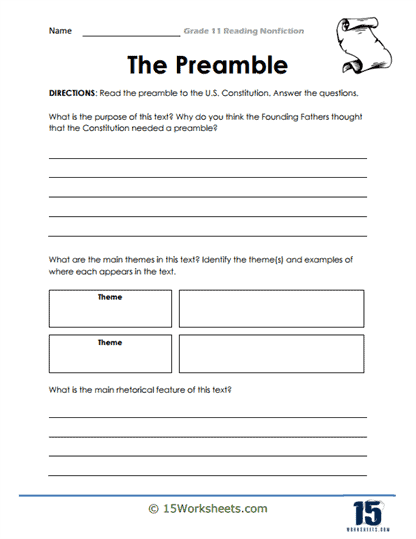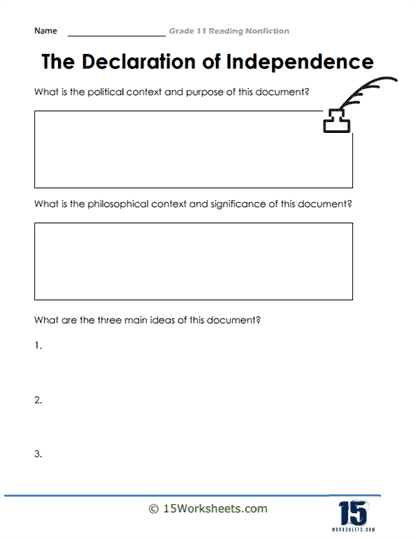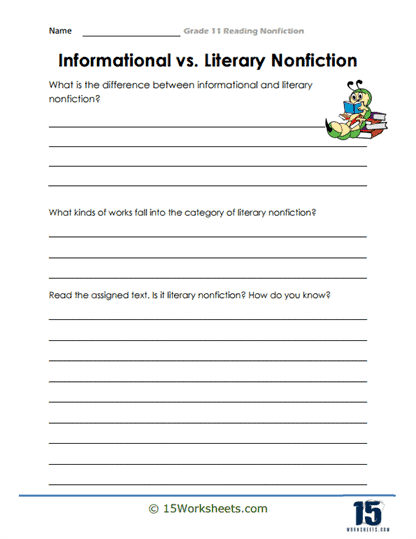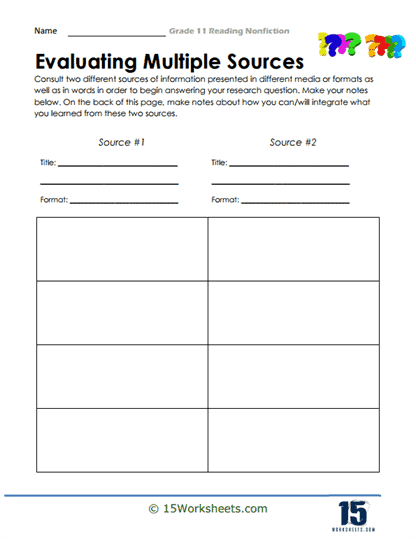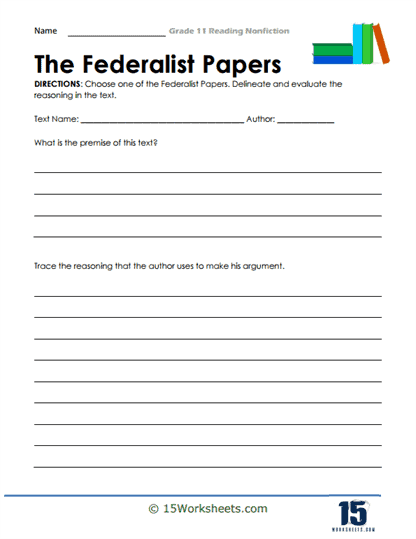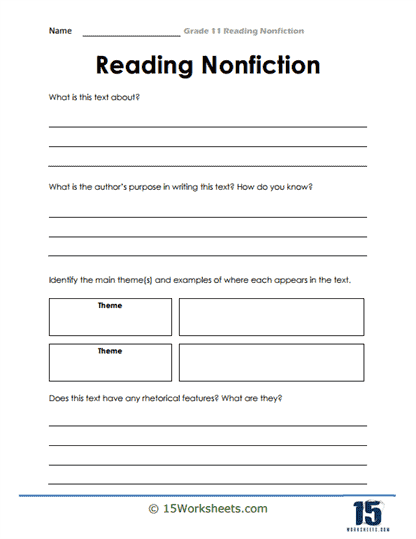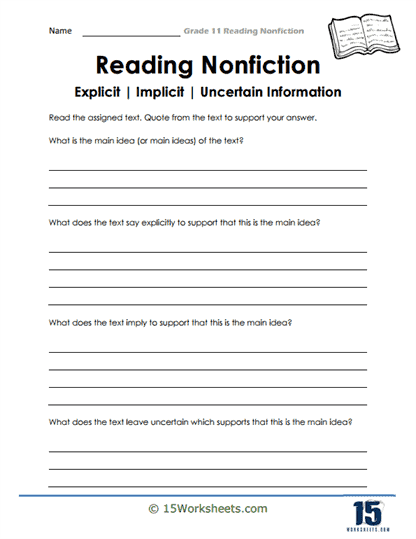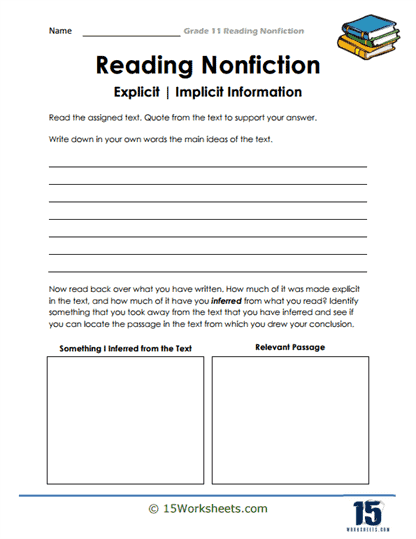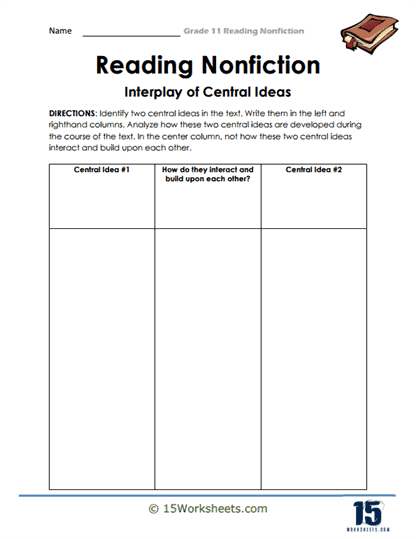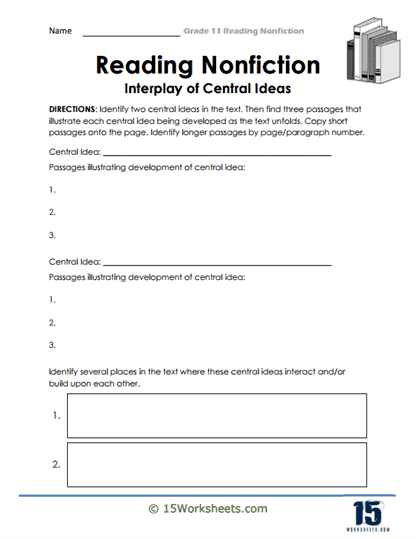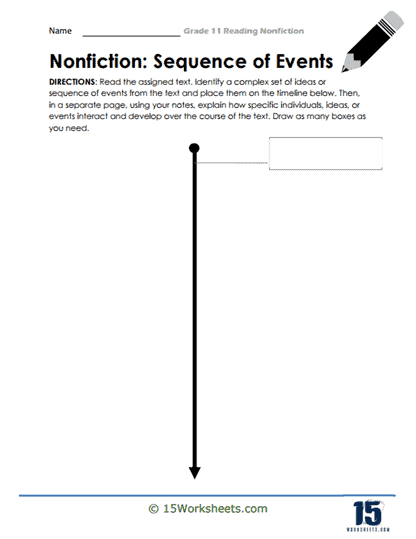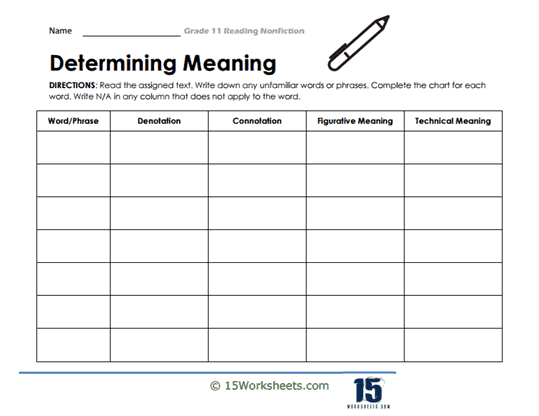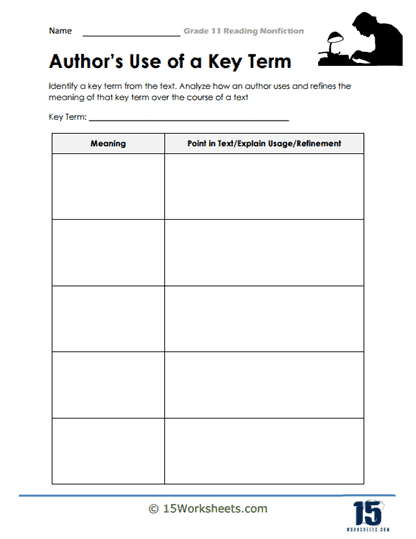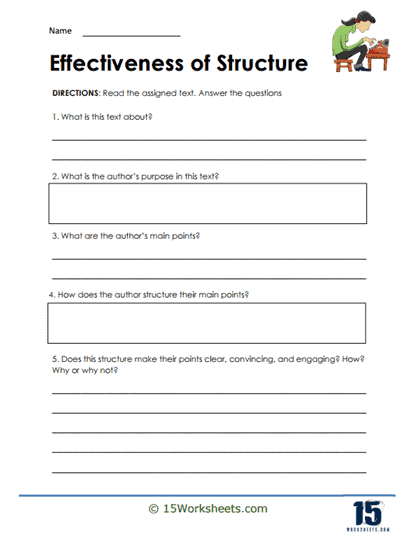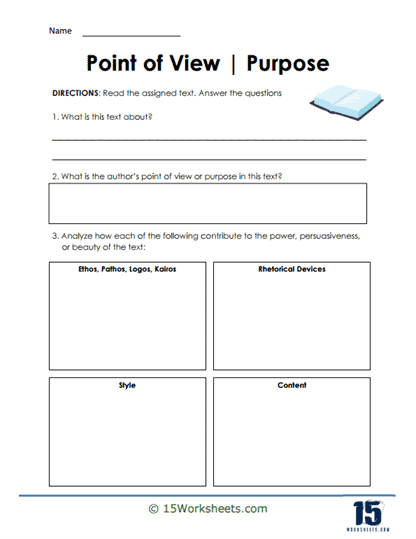Reading Nonfiction Comprehension Grade 11 Worksheets
All About These 15 Worksheets
As high school students embark on the journey to adulthood, the ability to comprehend and critically analyze nonfiction texts becomes increasingly vital. Nonfiction texts are the gateway to understanding the complexities of the real world, from history and science to current events and culture.
The Reading Nonfiction Comprehension Grade 11 Worksheets Collection is thoughtfully curated to equip students with the skills to navigate these texts effectively, empowering them to become informed, discerning, and critical readers. In this description, we will explore the significance of nonfiction comprehension and the multitude of benefits it offers to students.
What Reading Skills Should Grade 11 Students Have?
Reading is a complicated process that uses many skills at one given time. These skills come together and allow children to read comprehensions and understand what is happening. However, by the time students enter grade 11, they should have already learned a number of reading and comprehension skills.
1. Read Comprehensions, Recognize and Analyze Words, and Evaluate
Students should:
- Read fluently with smoothness, pace, and recognition.
- Understand evaluative and interpretative comprehensions.
- Demonstrate that they can analyze novels- they should identify and apply the knowledge of elements such as point of view, setting, and characterization.
- Identify techniques of literature such as satire and irony.
- Know how to apply the knowledge of the structure of the text so that they can analyze it properly.
- Predict the outcome of a possible plot.
- Understand and evaluate the purpose of the story.
2. Fluency
By the time students enter grade 11, they should be fluent with their words. This means that they should be able to recognize words, even if they can’t pronounce them. Considering that students are able to understand and read text by this age, their fluency should also start to speed up.
Another skill they need to have is word recognition. This means they should be able to instantly recognize an entire word just by looking at it without saying it out loud.
Students who can read quickly without making errors are considered “fluent” readers. These students read in a good space, can group words based on their meanings, and are able to use the appropriate tone and accent when reading words out loud.
3. Good Vocabulary
For students to understand what they are reading, they must have good vocabulary skills. Usually, students learn vocabulary over the years by experiencing the meaning of words in their daily lives and, of course, by reading. The more exposed these students are to books, the higher their chances are of developing good vocabulary.
A grade 11 student should be able to hold a proper conversation with an adult without sounding like a child. The sentence structure he uses should include new words and ideas. Even if the other party uses a new word, the grade 11 student should be able to use the context to figure out its meaning.
4. Sentence Structure and Cohesion
You might think that learning the way sentences are built is more of a writing skill than a reading skill. However, it also helps with your reading. Connecting ideas in between sentences is known as cohesion. This helps with building the structure of a sentence. Understanding this will allow a grade 11 student to read a text effortlessly, as well as understand what is happening in the text.
Knowing how ideas function in a sentence can allow students to understand the meaning of things from texts. They also learn to connect ideas to other ideas in a piece of writing. By grade 11, students should know to construct sentences and predict ideas that will come up as the article progresses.
5. Working Memory and Attention
By the time students enter grade 11, they should not only be fluent in reading, but they should also be able to understand the information given in the text they are reading. Working memory helps them remember that information, allowing them to build knowledge and gain meaning from it.
Another reading skill that grade 11 students should have is the ability to self-monitor. This means that they should recognize when they do not understand something. In this case, they should know that they need to stop, retrace their steps, and re-read so that they can clear up their confusion.
The Importance Of Reading Nonfiction For 11th Graders
The Reading Nonfiction Comprehension Grade 11 Worksheets Collection serves as a bridge to informed citizenship, academic excellence, and career readiness. Beyond equipping students with the essential skill of comprehending nonfiction text, it nurtures critical thinking, research proficiency, and vocabulary enrichment.
As students engage with texts spanning a broad spectrum of subjects and perspectives, they will not only enhance their comprehension skills but also develop the capacity to think critically, evaluate information, and communicate effectively. The skills acquired through nonfiction comprehension are not confined to the classroom; they are transferrable to a multitude of contexts in the real world.
Empower your students to navigate the sea of nonfiction information with confidence, becoming informed citizens, diligent researchers, and articulate communicators.
Invest in their educational journey and their future with the Reading Nonfiction Comprehension Grade 11 Worksheets Collection. Unlock the doors to knowledge, one worksheet at a time, and watch as your students become more adept, informed, and engaged readers and thinkers.

